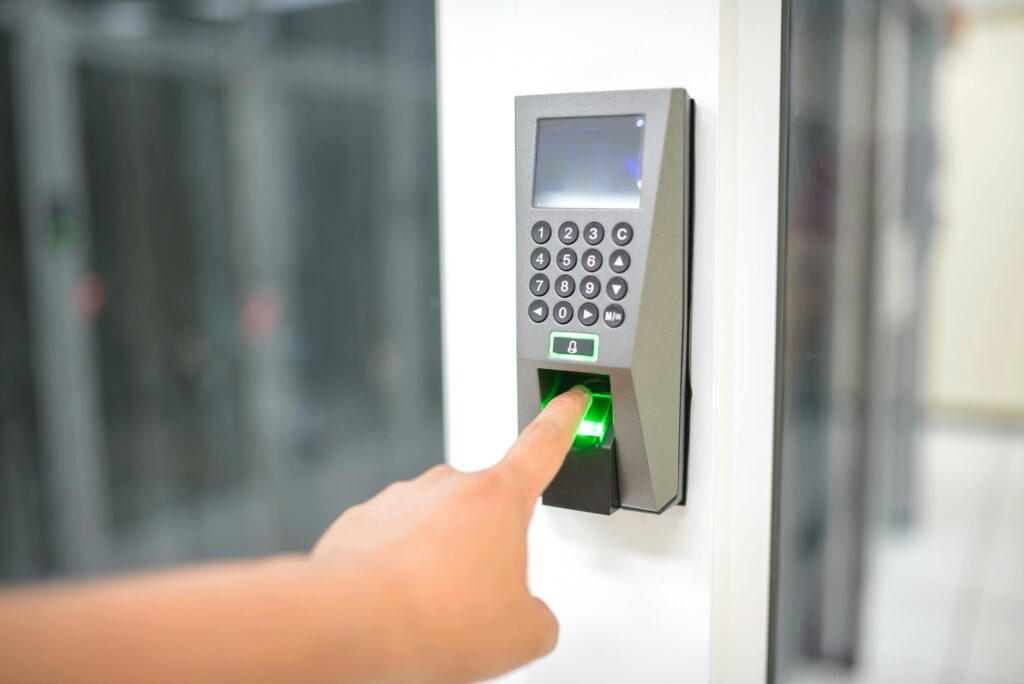
In an era where digital transactions and financial services are everywhere, strong security standards are more important than ever. Constantly targeted by cyber threats, the finance industry seeks advanced solutions to safeguard sensitive data, assets, and customer trust.
Traditional authentication methods, once considered adequate, are now falling short against increasingly sophisticated cyber threats. This shift has created an urgent demand for more robust, adaptive, and intelligent security solutions. This need has pushed Artificial Intelligence (AI) and biometric technologies to the forefront of financial security innovation.
In this article, we’ll explore top AI biometric tools reshaping financial security, highlighting their features, applications, and competitive strategic advantages.
Facial Recognition Tools with Liveness Detection
AI-powered facial recognition tools offer a frictionless way to access banking services and secure platforms. By analyzing unique facial features like eye spacing, jawline shape, and contours, these systems ensure accurate and secure user authentication.
Facial recognition alone isn’t foolproof, as advanced fraud tactics using photos, videos, or 3D masks can bypass basic systems. This is where liveness detection becomes essential. By analyzing subtle cues like blinking, head movement, and skin texture, AI ensures the system interacts with a real person, not a spoof.
This technology is widely used for customer onboarding, mobile banking logins, and ATM access. It helps financial institutions stay compliant with regulations while improving user convenience and reducing identity fraud risk.
AU10TIX notes that face liveness detection adds an adaptable layer of authentication for varying security needs. It’s especially valuable in KYC and compliance processes. Financial sectors like banking and insurance use it to enhance security while improving customer experience.
Voice Biometric Authentication Systems
Opus Research’s “State of Voice” survey reveals growing confidence in speech AI and automatic speech recognition across multiple industries. About 85% of respondents anticipate widespread adoption of voice technology within five years. Also, 43% believe voicebots will achieve humanlike interaction within a year, with 54% expecting it in 1–3 years.
Leveraging artificial intelligence, systems designed for voice authentication scrutinize distinct vocal characteristics such as pitch, tone, and cadence to verify a user’s identity. It adapts to factors such as background noise or voice changes from illness or aging. Financial institutions use it for phone banking, fraud prevention, and mobile access, offering secure, hands-free convenience.
Behavioral Biometric Tools
These tools use AI to monitor real-time user interactions beyond static authentication. They track patterns like keystrokes, gestures, and device handling to create unique behavioral profiles. Any deviation from these norms can instantly signal potential fraud or unauthorized access.
Unlike traditional biometrics that authenticate once, behavioral biometrics offer continuous session-based authentication. This makes it extremely difficult for fraudsters to replicate user behavior. As a result, it strengthens protection against account takeovers, social engineering scams, and advanced bot attacks.
The behavioral biometrics market is gaining significant momentum in the financial sector due to its ability to deliver continuous, real-time fraud detection. Mordor Intelligence reports that in 2025, the market is estimated to be valued at $2.72 billion. It is projected to grow to $9.21 billion by 2030, at an impressive CAGR of 27.64%.
Iris and Retina Scanning Systems
Leveraging AI to map unique eye patterns, highly accurate biometric authentication is delivered by iris and retina scanning systems. Iris scans analyze the colored eye’s texture, while retina scans capture blood vessel patterns at the back, both of which are stable over time. These methods resist spoofing and are ideal for securing vaults, sensitive logins, and high-value financial transactions.
Studies show that an iris scan can create over 200 bits of unique data, far more than a fingerprint. It makes iris recognition about 10,000 times more accurate than facial recognition. It can even tell identical twins apart since iris patterns form randomly and aren’t linked to DNA.
Multimodal Biometric Platforms
Multimodal biometric platforms use two or more methods, like facial recognition, voice, or fingerprints, for stronger, more flexible security. By layering these, AI reduces spoofing, false positives, and access errors. In finance, they improve verification for onboarding and transactions while offering users convenient, adaptable authentication based on available or preferred inputs.
The World Journal of Advanced Research and Reviews reports that a multimodal biometric system combining face and iris recognition showed high accuracy. Using a modified chaotic binary particle swarm optimization method, the system achieved a recognition rate of 99.78%. Another multimodal system using convolutional neural networks and KNN reached 99.28% accuracy with clean data and 97.14% with noisy data.
Frequently Asked Questions
What is liveness detection, and why is it important?
Liveness detection is an AI-powered tool that confirms that a biometric sample, like a face or fingerprint, is coming from a real, live person. It blocks spoofs using photos, videos, or masks. This technology is vital for secure authentication and fraud prevention in finance.
Are voice biometrics secure enough for financial use?
Yes, voice biometrics are secure enough for financial use. They analyze unique vocal features that are hard to replicate and use AI to spot fraud attempts. With high accuracy, spoof resistance, and real-time verification, they provide a safe, user-friendly layer for financial transactions.
How is AI used in real-time fraud prevention?
AI is used in real-time fraud prevention by continuously analyzing user behavior, transaction patterns, and biometric data to detect anomalies. It quickly flags suspicious activities, adapts to emerging threats, and enables instant responses. This proactive approach allows financial institutions to interrupt fraudulent activity before it escalates to significant damage or monetary loss.
Shaping the Future of Financial Security
As digital finance continues to evolve, so must the security frameworks that protect it. AI-powered biometric tools are revolutionizing how financial institutions safeguard identities, prevent fraud, and deliver seamless customer experiences. These technologies not only offer superior accuracy and adaptability but also align with rising demands for privacy, compliance, and operational efficiency.
By embracing AI-driven biometrics, the finance industry is moving beyond outdated authentication methods toward a more intelligent and resilient security landscape.